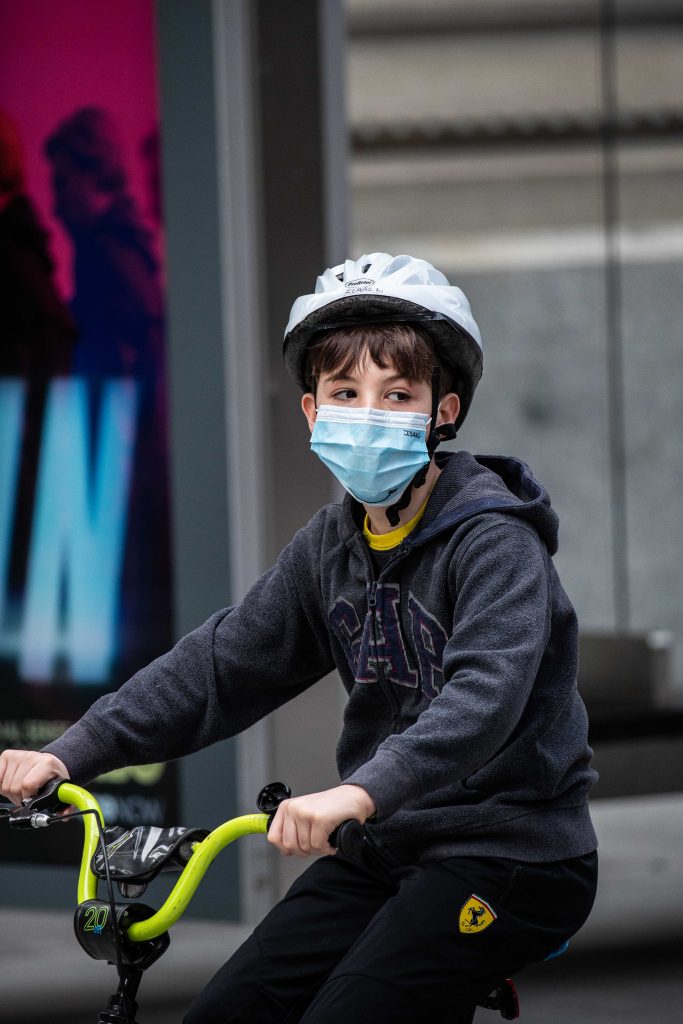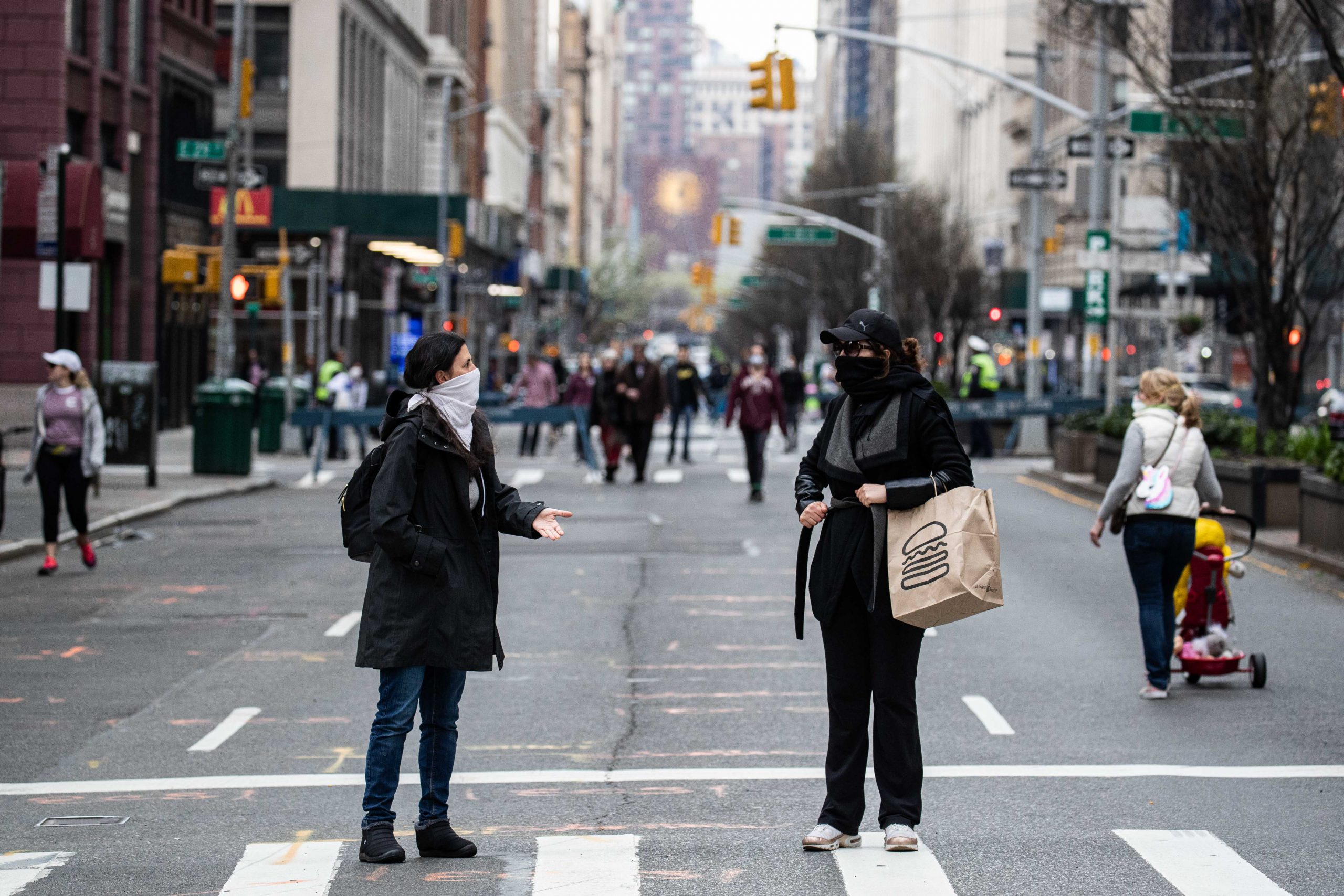BY THE VILLAGE SUN | Mayor de Blasio earlier this month pulled the plug on a short-lived “open streets” program that created space in each borough for people to be outside safely in the fresh air.
The mayor said the car-free streets program required too much police manpower.
Manhattan’s designated open street was along Park Ave. spanning part of the 20s and 30s.
Now, though, City Council Speaker Corey Johnson and Councilmember Carlina Rivera are upping the ante by introducing legislation to create up to 75 miles of open streets citywide during the pandemic to allow cyclists and pedestrians more room for social distancing.
Their bill will be introduced Wed., April 22.
The legislation does not specify which streets would be opened; that would be decided afterward, assuming the bill wins approval.
And the mayor conceivably could veto the initiative, which the Council could then override with a two-thirds vote of its 51 members.
For her part, Manhattan Borough President Gale Brewer has proposed pedestrianizing Broadway between Union Square and Central Park, using community groups instead of police to enforce street closures.
With Governor Cuomo having said New York State on Pause will continue through at least May 15 — and with the weather getting balmier by the day — the politicians say cooped-up New Yorkers desperately need car-free open streets. Many sidewalks are too narrow to allow for safe social distancing, and there just isn’t enough park space, they say.
“New Yorkers don’t have the street space they need to maintain proper social distancing, which we know is essential in this public health crisis,” Johnson said. “While we want to work collaboratively with the administration to open streets, this issue is so important and so urgent that we are taking legislative action to make it happen ourselves. Other cities across the country and around the world have demonstrated that this is doable. There is no reason we can’t do this here.”

“For years, New York City led the nation in developing innovative solutions to our biggest urban challenges,” Rivera said. “Now we’ve fallen behind so many other cities during the COVID-19 crisis, including when it comes to ensuring proper social distancing on our streets for New Yorkers, from the senior going to the grocery store, to the essential worker on their way to the hospital. And as the weather gets warmer and more New Yorkers seek brief respites from stuffy, cramped and often un-air-conditioned homes, we have to provide them with outdoor spaces where they can properly social distance, and our parks just can’t do the job alone. I’m proud to be leading this effort, and I look forward to working with the Mayor’s Office and the Department of Transportation collaboratively. But let’s be clear — the need for expansive open streets in New York City cannot wait any longer.”
Councilmember Ydanis Rodriguez, chairperson of the City Council’s Transportation Committee, also supports the initiative.
“The increase in cyclists we saw in March must also be accompanied by an increase in street space available for all New Yorkers to use,” he said. “We must also continue working to expand the bike-sharing programs to nearby hospitals and medical centers for all healthcare workers and members of the community to use during this time.”
Councilmember Fernando Cabrera is also on board with the bill.
“Addressing the impact of dealing with COVID-19 also requires maintaining physical health and mental health,” he said. “New Yorkers have been mostly indoors for more than a month. While ‘stay at home’ measures are working to reduce the spread of the coronavirus, they also have unintended consequences for mental and physical health, for which exercise is an important component. Let’s open streets to pedestrians, while we continue to enforce social distancing and face covering.”
“Berlin, Paris, Montreal, Denver, Minneapolis, Vancouver, Winnipeg, Portland, Bogota and Oakland have all taken this commonsense action,” Councilmember Brad Lander said. “None of them needed four police officers per block to make this program work and ensure that people observe physical distancing. Neither do we.”
“Whose streets? Our streets!” declared Councilmember Carlos Menchaca. “The reduction in public transportation service has forced people to cram buses, trains and ferries. We need to make it safe and open for our neighbors to use alternative means of transportation. As a bicycle commuter and safe streets advocate, I applaud and sponsor this legislation.”
Other councilmembers behind the bill include Daniel Dromm, Costa Constantinides, Ben Kallos, Peter Koo, Steven Levin, Keith Powers and Antonio Reynoso.
Advocates hailing the measure include Danny Pearlstein, Riders Alliance police and communications director; Danny Harris, Transportation Alternatives executive director; and Amy Cohen, Families for Safe Streets co-founder.
However, opponents of the city’s current major traffic experiment — the car-free 14th St. busway — were, not surprisingly, exasperated after hearing about this latest car-banning scheme.
In addition, Community Board 4 recently recommended making numerous streets in Chelsea car-free during the New York shelter-in-place shutdown, including 15th, 16th, 17th, 18th, 21st and 22nd Sts., from Sixth Ave. to the West Side Highway.
Village attorney Arthur Schwartz is still fighting the busway, and intends to appeal a prior ruling against his lawsuit on the 18-month-long pilot project.
“This is absurd!” he said. “There is not a lack of space on the sidewalks, and there is a continued need for delivery truck access, taxi access and sometimes car access.”


A scheme devised by people who don’t actually live downtown proposed on behalf of commercial real estate developers masquerading as a solution to a problem that doesn’t exist.
And a giant waste of money and resources to execute, much less enforce.
Every health professional is advising us to isolate in place and to avoid congregating in public, which this proposal is encouraging.
Can these politicians produce one medical expert in America who thinks this publicity stunt from Transportation Alternatives is a good idea?
The flip side to the enforcement angle is the emergency vehicle angle. Ambulances and police cars need to respond to 9-1-1 calls. Delivery trucks and garbage trucks need to get through. I’m just saying that police barricades would be a huge issue.
I think people are just walking in the streets anyway. Instead of banning cars from certain streets, can’t we just have a media campaign to urge drivers to slow down and look out for pedestrians? Unfortunately, instead, many drivers are taking advantage of the empty streets to speed!
Media campaigns don’t work. Street infrastructure works. The drivers on our streets come from all over the country (look at the license plates) and from all over the world. It is enough that one driver was not educated by a media campaign to create a disaster. Put barricades the same as you do for a street fair, Emergency, utility and delivery vehicles can enter without any issue and also the vehicle that will drop off or pick up the elderly and the disabled. Closed to through traffic sign will do that the trick. Look at the report from Oakland, CA.
In addition, on streets that will be open to through traffic the city needs to remove free car parking. That will allow people to social distance more easily, extending the sidewalk another 10 ft wide will make a huge difference.
seeing more use of our currently vacant streets would be an improvement but i urge advocates in decision making positions to separate bikers from pedestrians by dividers on same street or by designating each street for EITHER riders or walkers.
yes there car free road used by bikers and walkers all over the world but the bikers are regulated by gov’t and police confiscate the bikes of violators.
compliance with laws for safety of both biker and pedestrian is the norm however…
Europeans share the same complaint with New Yorkers; though fewer bikers ignore traffic lights and traffic direction in Europe, walkers fear being hit by bikers who travel faster than cars and/or exceed the city speed limit.
Just as there is all needed access on 14th Street now, streets closed to provide more space for people during this nightmare would not keep a few necessary vehicles from entering.
I love this idea!